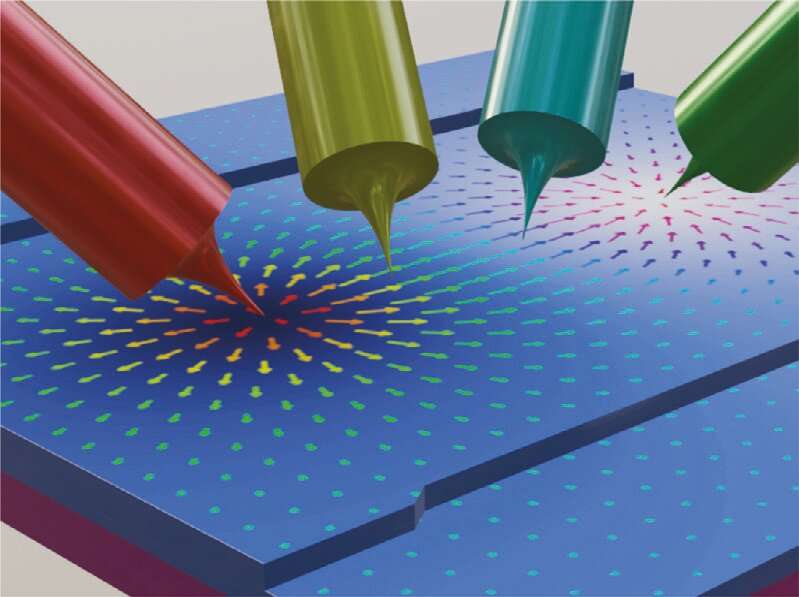Directly measuring electrical properties in ultra-thin topological insulators

Physicists at Forschungszentrum Jülich have made a significant step towards the realization of new types of electronic components. Using a special four-tip scanning tunneling microscope, they were able to directly measure the extraordinary electrical properties that exist in ultra-thin topological insulators for the first time. These properties result from the fact that the electron spin is coupled to the direction of the electric current, and enables realization of a topological quantum computer.
The decoherence quantum bits, or qubits for short, is one of the main hurdles in the construction of practically usable quantum computers. So-called topological quantum computers are considered an elegant and promising solution to this problem. The sensitive quantum information in such a computer is particularly well protected against errors by the choice of certain materials. However, the concept exists so far largely only on paper. The search for a material system with the appropriate properties is still in full swing.
One way to realize a topological quantum computer is based on the use of topological insulators, which are a new class of materials with special properties: They behave like an insulator in their interior, i.e. they do not conduct electricity there. Their surface, however, is conductive with the direction of current strictly coupled to the spin of the charge carriers.
Material for quantum computers and spintronics
A special case are the 3D topological insulators discovered only a few years ago. If one imagines them as a cube, they are conductive on all six sides. However, the conductivity on opposite surfaces decreases when the topological insulators cube is made thinner and thinner, as researchers at the Peter Grünberg Institute for Quantum Nanoscience in Jülich have now been able to show. What finally remains is a thin layer, only a few nanometres thick, with four conductive edges at which electric current continues to flow in a spin-directed manner.
Due to their special properties, such ultra-thin topological insulators are interesting materials for applications in spintronics—that is, for the development of components and devices that use the electron spin to process and store information. In combination with superconductors, they are promised to realize further, even more exotic effects that can be used in topological quantum computers.
Experiments with a "nano-multimeter"
For their measurements, the researchers used a special scanning tunneling microscope with four tips. The instrument, which was developed at Forschungszentrum Jülich, makes it possible to carry out electrical measurements under high-purity conditions on extremely small structures. The researchers also used a new method that makes the positioning of the measuring tips even more precise with an accuracy of only a few nanometres.
Using the "nano-multimeter", the researchers were able to demonstrate for the first time that the nanoscale electrical properties of the thin films behave as theoretically predicted. The observation is important for a deeper understanding of topological insulators and crucial for their further development towards potential applications.
The research was published in Advanced Quantum Technologies/
More information: Arthur Leis et al, Lifting the Spin‐Momentum Locking in Ultra‐Thin Topological Insulator Films, Advanced Quantum Technologies (2021). DOI: 10.1002/qute.202100083
Provided by Forschungszentrum Juelich





















